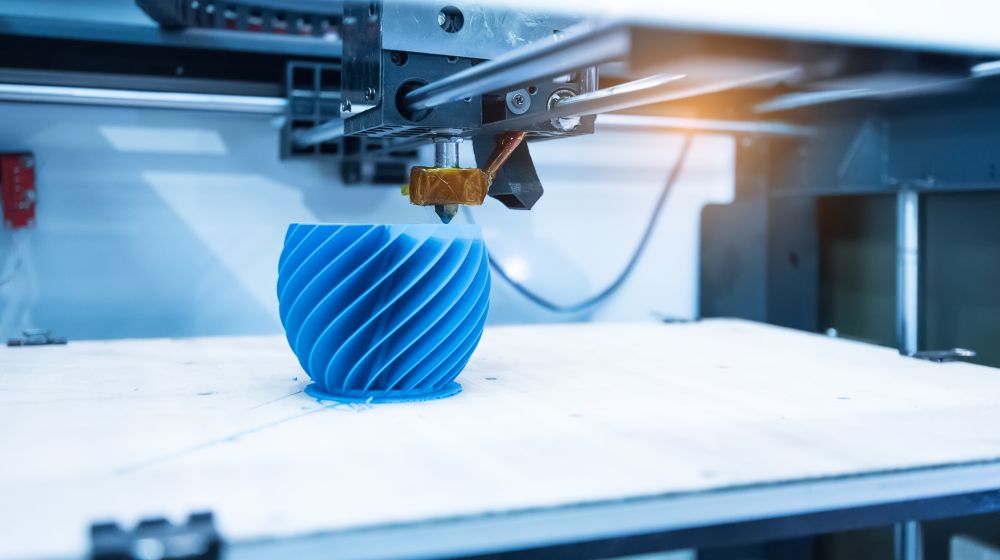Last Updated on September 25, 2024 by Adams
Why 3D Printing is the Future?
3D printing has expanded in factories and workplaces all over the world during the last 10 years, and millions of things are produced each year utilizing additive manufacturing.
Because 3D printing is such a readily available technology that allows you to build goods exactly how you want them, it has fundamentally changed the way manufacturing is done now and will continue to do so in the future. The following are just a handful of the ways that 3D printing will continue to influence our lives.
Methods are now changing.
In contrast to traditional methods, 3D printing can create parts and allow for alterations without the use of additional tools or equipment. People are enamored with technology because of the exponential promise of the future. The arrival of 3D printing has radically altered traditional manufacturing.
Why 3D printing is the industrial industry’s future
You probably don’t consider a 3D printer to be something that could actually improve your life.
This has changed as a result of technology advancements, which have allowed us to begin transitioning away from traditional production and toward a time when we can produce things with our own two hands at home.
Continue reading to find out why 3D printing is the future of manufacturing and how we might use it in our daily lives in the not-too-distant future.
How does it work?
3D printing is the process of creating three-dimensional physical objects from a digital source. A 3D printed object is made using additive processes, which involve the addition of many layers of material in diverse shapes. Subtractive manufacturing, on the other hand, begins with a piece of material and involves cutting away at it in order to mold it into the desired shape.
What is its purpose?
3D printing can be used for prototyping, product development, and even large-scale production. It is a versatile technology that may be used for new product creation as well as design refinement. Furthermore, it is more accessible and affordable than ever before.
Who is using it now?
Even while 3D printing has been around for a while, it is only now becoming mainstream. This is because technology has progressed to the point where it is both accessible and affordable. 3D printers are being used by a wide spectrum of businesses, from established firms to young startups.
What impact will this technology have on your life?
As a result of 3D printing in the manufacturing industry, the game will change. The speed and efficiency with which these things may be manufactured without sacrificing quality bodes well for the prospective manufacturing revolution.
The options for what a 3D printer may manufacture are nearly unlimited, ranging from everyday objects to medical implants. Furthermore, as technology progresses, the ways in which we use it will alter.
This allows you to create anything you can imagine without having to worry about the costs or lead times associated with traditional manufacturing procedures.
So, whether you’re looking for a brand-new pair of shoes or a piece of jewelry custom-made for you, you can find it – or make it.
Where do I even begin?
Begin by looking for a trustworthy 3D printer. Because there are so many different types and brands of printers available, doing your research before purchasing one is critical. Following the purchase of a printer, you must choose the appropriate filament.
Although other materials are available, ABS plastic is a good choice for the majority of people. The next step is to develop or find the model you want to print.
The most common type of file used for 3D printing is an STL file, so make sure yours is in that format. You may begin printing after you have received your file! The final stage before printing is post-processing.
What options do you have in 3D Printers?
When it comes to 3D printing technology, there are numerous possibilities on the market. Every option offers a unique set of advantages and disadvantages, so do your research before making a choice. Here are some popular 3D printing methods to consider:
Fused Deposition Modeling (FDM): FDM printers melt and extrude thermoplastic filament one layer at a time to create three-dimensional objects. FDM printers are among the most frequently utilized on the market due to their low cost and ease of usage.
A laser is also used in stereolithography (SLA) printers to harden resin into layers.
Consequences of this in the future
Inventors and creatives will find it easier and more convenient to put their ideas into action as 3D printing becomes more commonly used in society. 3D printing has already made prototyping considerably easier for inventors. 3D printing may be used in future manufacturing processes.
This innovative technology is swiftly adopted by the rest of the world. 3D printing, in conjunction with other developing technologies such as virtual reality, has the potential to profoundly alter current standards for training, diagnosis, and treatment of complicated medical diseases.
Final Thoughts:
Manufacturing has already begun to undergo a revolution as a result of 3D printing, and its use will only increase in the coming years. The ability of 3D printing to make items quickly, economically, and without sacrificing quality is changing the way we think about production and manufacturing.
This technology will not only make it easier for entrepreneurs and small businesses to get started, but it will also allow for more customization and personalization of the products we use every day.
In a world where mass production is becoming increasingly rare, 3D printing offers a practical, economical, and efficient alternative.
Even if 3D printing has not yet overtaken the whole manufacturing business, researchers forecast substantial growth and a market worth 32.78 billion USD by 2023. Analysts estimate that the 3D printing market will be worth $32.7 billion USD by 2023. This demonstrates that 3D printing has a promising future.
Recommended Readings (Rated Recommendation)

